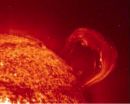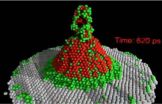(Press-News.org) The second wave of the pandemic (H1N1) was substantially greater than the first with 4.8 times more hospital admissions, 4.6 times more deaths and 4 times more ICU cases, according to a study published in CMAJ (Canadian Medical Association Journal) (pre-embargo link only) http://www.cmaj.ca/embargo/cmaj100746.pdf. However, because of the larger number of people hospitalized during the second wave compared to the first, the percentage of people with severe outcomes was smaller.
The researchers compared demographic and clinical characteristics as well as outcomes of patients with (H1N1) influenza admitted to hospital during the first wave with those admitted during the second wave and post-peak period of the pandemic.
In the first wave, Nunavut, Manitoba and Quebec had the highest rates for hospital admissions. In the second wave, all provinces and territories were affected with the Maritimes provinces, Alberta, British Columbia, the Yukon Territory and the Northwest Territories experiencing much higher rates of hospital admission than in the first one. Quebec and Ontario were impacted in both waves, with Quebec reporting the highest number of hospitalizations and Ontario reported the most deaths overall.
At the height of the first wave (May 31 to June 20, 2009), 9.4% of hospital admissions, 10.1% of ICU admissions and 10% of deaths occurred. At the height of the second wave (October 25 to November 14, 2009), 51% of overall hospital admissions, 49.4% of ICU admissions and 53% of deaths occurred.
ICU admissions and deaths as a percentage of hospitalizations went down in the second wave.
"The second wave was substantially larger and, although the patients admitted to hospital were older and more of them had underlying conditions, a smaller proportion had a severe outcome," writes Melissa Helferty, Public Health Agency of Canada and coauthors. "The differences are thought to be due mainly to public health and clinical interventions implemented between the first and second waves."
"A national seroprevalence survey at the end of the first wave would have allowed us to better qualify the severity of the cases in Canada and permitted a more accurate comparison with other countries," conclude the authors.
###
MEDIA NOTE: Please use the following public links after the embargo lift:
http://www.cmaj.ca/cgi/doi/10.1503/cmaj.100746
Contact for interviews: Media Relations Office, Public Health Agency of Canada, 613 941 8189 for Melissa Helferty
END
Health Canada's cancellation of plans to renew tobacco warning labels on cigarette packages may lead to increased smoking rates and smoking-related illnesses and deaths, states an editorial in CMAJ (Canadian Medical Association Journal) (pre-embargo link only) http://www.cmaj.ca/embargo/cmaj101583.pdf.
Ten years ago, Canada was a leader in warning labels and other effective tobacco policies. Abandoning this labeling policy may be a set back for efforts in Canada, particularly as labels are now the government's only remaining mass communication initiative warning of the ...
The findings are based on comparisons of virtual imprints of the developing brain and surrounding structures (known as endocasts) derived from the skulls of modern and fossilized humans, including that of a newborn Neanderthal.
Philipp Gunz of the Max Planck Institute for Evolutionary Anthropology explained that the differences researchers observe in early brain development likely reflect changes in the underlying brain circuitry. It is that internal organization of the brain that matters most for cognitive ability.
"In modern humans, the connections between diverse ...
###
These new findings will be presented in three invited talks at the American Physical Society, Division of Plasma Physics 52nd annual meeting on November 8-12 in Chicago. END ...
Researchers at the Princeton Plasma Physics Laboratory have successfully used Coaxial Helicity Injection (CHI) to generate plasma current and couple it to a conventional current generation method at the National Spherical Torus Experiment (NSTX) fusion experiment. After coupling, the combined process generated 1 million amperes of current using 40 percent less energy than needed to generate this current using the conventional means by itself, thus demonstrating that a high-quality initial magnetic configuration was produced by CHI.
Plasma confinement devices based on ...
Fusion plasmas in the laboratory typically reach 100 million degrees. These high temperatures are required to ignite the hydrogen plasma and maintain the fusion burn by the production of high-energy alpha particles. One challenge for a fusion reactor is how to contain the alpha particles in the vessel long enough for the particles to efficiently heat the hydrogen plasma. One way that these alpha particles can escape the fusion chamber prematurely is by exciting high frequency Alfvén waves and riding these waves to the vessel walls, like a surfer rides a wave to the beach.
While ...
When physicists probe the mysteries of plasma, the fourth state of matter, they often discover phenomena of striking beauty. Much as when the Hubble Space Telescope sent back vivid images from space of ionized gas clouds (an interstellar plasma!), new 3D images of shear Alfvén waves are delighting both scientists and a new generation of science enthusiasts.
Plasmas support a large variety of waves. Some of these are familiar, such as light and sound waves, but a great many exist nowhere else. One of the fundamental waves in magnetized plasma is the shear Alfvén wave, ...
Just like an electrical switch allows the flow of electricity into electrical circuits, relativistic transparency in plasma can act like a fast optical switch allowing the flow of light through otherwise opaque plasma. Modern day lasers, such as the Trident laser in Los Alamos National Laboratory delivers a 200 terawatt power pulse (roughly 400 times the average electrical consumption of the United States) in half a trillionth of a second (picosecond) time. As shown in Fig. 1, when the laser power reaches a threshold limit, relativistic transparency in plasma turns the ...
The Sun sporadically expels trillions of tons of million-degree hydrogen gas in explosions called coronal mass ejections (CMEs). Such clouds—an example is shown in Figure 1a—are enormous in size (spanning millions of miles) and are made up of magnetized plasma gases, so hot that hydrogen atoms are ionized. CMEs are rapidly accelerated by magnetic forces to speeds of hundreds of kilometers per second to upwards of 2,000 kilometers per second in several tens of minutes. CMEs are closely related to solar flares and, when they impinge on the Earth, can trigger spectacular auroral ...
Physicists working on the National Spherical Torus Experiment (NSTX) at the Princeton Plasma Physics Laboratory are now one step closer to solving one of the grand challenges of magnetic fusion research—how to reduce the effect that the hot plasma has on fusion machine walls (or how to tame the plasma-material interface). Some heat from the hot plasma core of a fusion energy device escapes the plasma and can interact with reactor vessel walls. This not only erodes the walls and other components, but also contaminates the plasma—all challenges for practical fusion. One method ...
Whenever two pieces of metal at different voltages are brought near each other, as when an appliance is plugged into a live socket, there is a chance there will be an arc between them. Most of the arcs people see are a breakdown of the gas between the metal surfaces, but this type of breakdown can also occur in a vacuum. This vacuum breakdown, which until recently has not been well understood, has implications for applications from particle accelerators to fusion reactors.
As part of an effort to understand the maximum accelerating field in particle accelerators, scientists ...



